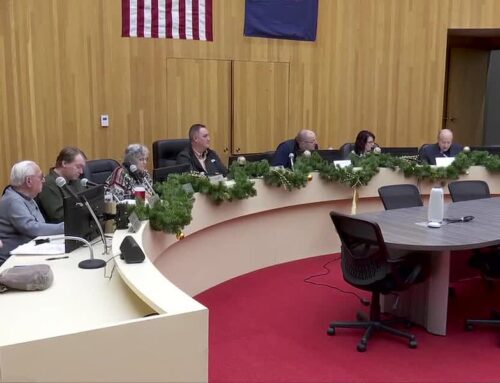Will Trump’s tariffs stall the greening of Asia’s data centres?
April 29, 2025
At the start of April, Bloomberg reported that the Blackstone-owned AirTrunk is seeking a S$2.2 billion (US$1.6 billion) green loan for new 80.2 megawatt (MW) data centres that meet its eligibility criteria in energy efficiency, renewable energy adoption and water management in Singapore, as it looks to ramp up its expansion plans regionally.
Separately, the Australia-based data centre specialist is in the process of wrapping up a US$2.8 billion equivalent sustainability-linked loan to fund the capital expenditure requirements of its data centres in Malaysia, Singapore and Hong Kong, and signed Malaysia’s first data centre virtual power purchase agreement (PPA) to procure 30 MW of renewable energy from German solar developer ib vogt in March.
Last December, United States-based data centre firm Equinix also signed its second PPA with Singapore-listed utility Sembcorp for 58.5 megawatt-peak (MWp) of solar energy, following their inking of a 75 MWp deal eight months earlier.
Power-hungry data centres are projected to account for 4.5 per cent of global electricity demand in 2035 – threatening to offset the drop in energy-related emissions this decade, according to a new BloombergNEF (BNEF) report. Emerging economies in Asia, the Middle East and Africa are expected to account for the bulk of data centre power demand, which is set to surge by six to 16 times in the same period.
While the report singled out the US as “the single most important market in this trend”, president Donald Trump signed executive orders to revive the use of coal – despite it being the dirtiest fossil fuel which substantially contributes to planet-warming greenhouse gas emissions – to service the country’s AI boom earlier this month.
Following the Trump administration’s sweeping tariffs, Microsoft – which pledged at least US$4.9 billion of investment to ramp up its data centre buildout in Southeast Asia last year – pulled the plug on some of its AI data centre projects in the US.
Amazon, Meta, Microsoft and Google are among the top purchasers of renewable energy through corporate PPAs, having contracted almost 50 GW – equivalent to Sweden’s generation capacity – to date. With these US big tech firms hitting pause on their data centre spending spree, there are fears that their existing green data centre investments elsewhere in the world might be impacted.
“There was definitely a euphoria around how many AI data centres we’ll need, which generally happens with any new investment areas,” Ali Izadi-Najafabadi, head of Asia Pacific, BNEF told Eco-Business. For instance, in February, the release of Chinese startup DeepSeek’s AI model – which was hailed as a more efficient alternative to Open AI’s ChatGPT – spurred debates on whether it proved that AI could be a lot greener, said Izadi-Najafabadi.
“The original estimates of [data centre growth] were probably too high. Now, the current macroeconomic environment makes it challenging as they are fairly capital expenditure intensive, so these companies will have to consider whether they want to continue with existing plans,” he said.
Unless data centre developers are currently able to tap into current government subsidies or anticipate more grid constraints down the line, they might choose to “wait and see” if borrowing costs come down before making the decision to continue with their investments, said Izadi-Najafabadi.
Both AirTrunk and Equinix declined to comment on the US tariffs’ impact on their data centre development plans in the region, but ib vogt told Eco-Business that it continues to see strong demand from corporate offtakers to participate in available PPA schemes in Malaysia and Vietnam, where such deals are permitted.
“The tariff serves as an additional push for them to procure clean energy as a way to contain their energy costs, which are exposed to international trade tariff risks,” said ib vogt’s regional head of PPA origination and energy offtake Jane Tay.
Izadi-Najafabadi echoed the sentiment that clean power procurement for data centres will continue as a long term trend, despite increasing greenhushing, where companies underreport their green credentials to avoid potential backlash. “For some of these companies, emission reduction remains an important goal. For others, the main reason they would do it is because a clean power PPA could potentially hedge against fossil fuel volatility.”
“If you’re trying to make your economy more resilient to trade shocks, then having more of your energy come from domestic sources is a much better option,” he said. “If you’re reliant on a thermal power plant, you always have to buy fuel. Even if you are blessed with fossil fuels locally, the pricing is much more affected by whatever happens globally. Whereas if you import a solar panel, once you’ve installed it, you’ve got 25-plus years of generation without much reliance on additional imports.”
In Southeast Asia, the growing availability of virtual PPAs – a type of deal that involves purchasing green electricity from a power plant located elsewhere through renewable energy certificates (RECs) – also means that data centres now have greater avenues to derisk and stabilise energy costs and meet their sustainability goals, said Han Lyn Saw, ib vogt’s regional investment manager.
These transactions are currently allowed in the Philippines, Singapore, Vietnam, Malaysia and Thailand. A new study found that most data centres committed to 100 per cent renewable energy sourcing in Singapore rely on virtual PPAs to offset electricity drawn from the city-state’s gas-powered grid due to the absence of reliable power imports from neighbouring Southeast Asian countries, despite concerns around traceability given that physical electricity is not traded.
“If green data centre developments in Southeast Asia rely heavily on intra-Asia supply chains, which we believe many of them do, then the direct impact of the US tariffs should be minimal,” said Tay. “However, there might be some critical infrastructure components such as advanced chip software or specialised control systems that would need to be sourced from the US, which wouldn’t be any issue unless the importing country imposes retaliatory tariffs.”
Caroline Wang, China analyst at think tank Climate Energy Finance, said that the tariffs would have a greater impact on the re-export trade of Southeast Asia countries, particularly those that have been heavily reliant on the US market like Cambodia, Vietnam, Thailand and Malaysia. Last week, the US slapped large Chinese solar panel producers operating in these countries with record-high levies.
Given that the US imports more solar panels, cells and other components from Southeast Asia than from any other region, trade disruption could lead to costlier renewables and delays in new buildouts in the region, said Wang, with some data centres opting for gas hybrids instead of 100 per cent renewables.
More affordable cleantech for Asia?
While Trump’s tariff-heavy policies are likely to stall the US’ energy transition by limiting its access to affordable renewable technologies and promoting fossil fuel reliance, they are unlikely to have a similar impact in Southeast Asia, said experts.
“With a few exceptions, the US is not actually leading supply chains when it comes to particularly mature renewable technologies, electric vehicles and batteries,” said Izadi-Najafabadi.
He added that protectionist policies in the US and to some extent, Europe, may counterintuitively make China’s clean technologies more affordable for the rest of the Asia Pacific region, as manufacturers with excess capacity are now forced to find new markets.
“So a potential silver lining is that due to competition on the supply side, you might see more equipment at more affordable prices becoming available in Asia Pacific,” said Izadi-Najafabadi.
Ib vogt’s Han likewise expects clean energy components to become cheaper due to a drop in demand and an oversupply in the region. “We believe in positive results as countries come together to negotiate and create [regional] alliances.”
Domestic policies matter too
Beyond US-imposed tariffs, Izadi-Najafabadi emphasised that the prospects of renewables investments ultimately depends on domestic policies.
“For emerging markets, it is dependent on both their trade policies as well as their own energy market regulations,” he said, citing the Philippines as a positive example of a market with renewables-friendly policies through its green energy auction programme. Meanwhile, the renewable power market regulations remain challenging in Indonesia, said Izadi-Najafabadi.
“Not everything is about the tariffs. Obviously, a country’s domestic energy policies still do matter,” he said.
“At the end of the day, financial institutions will make investments that have positive returns,” Izadi-Najafabad said. “Changes in their decisions are less to do with them not considering renewables investments attractive or climate risk as important. It will be more about macroeconomic risks, as well as each market’s local policies. So if a country’s government still provides opportunities for investors to make a decent return on renewables, they will invest.”
Search
RECENT PRESS RELEASES
Related Post




